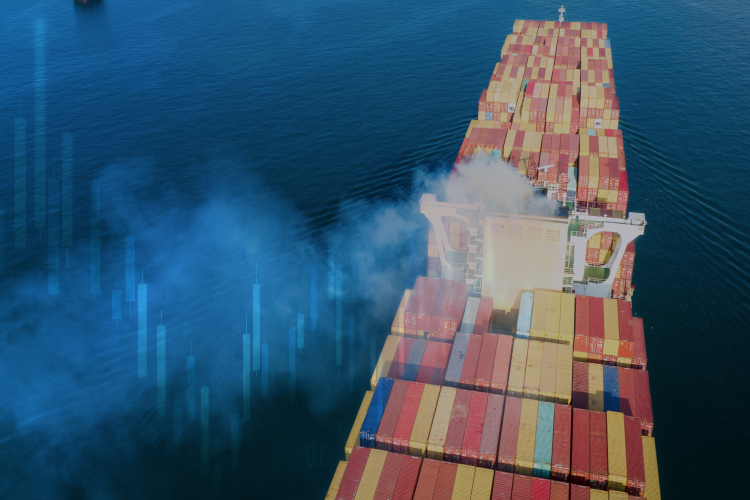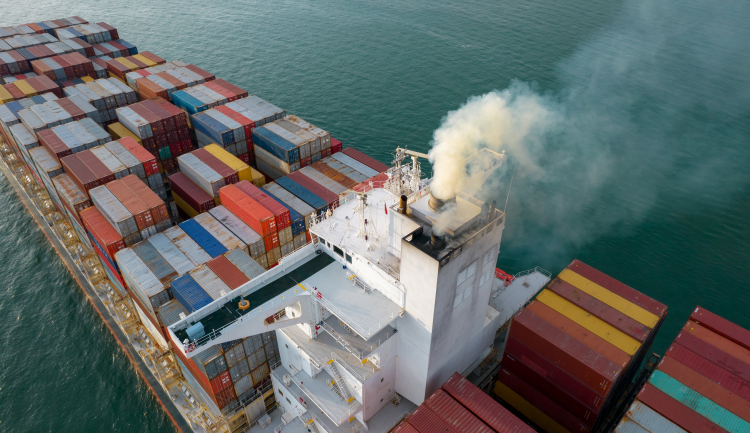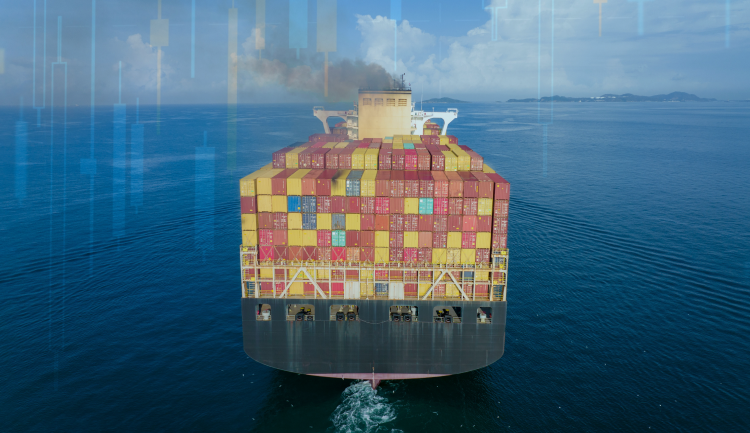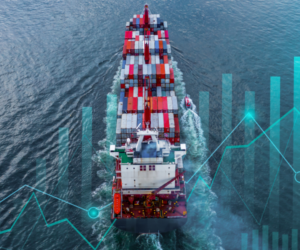
In an era of heightened environmental awareness, industries around the world are grappling with the urgent need to address their carbon footprint. The maritime industry, responsible for transporting over 80% of global trade, is no exception. As concerns about climate change grow, the concept of ship carbon intensity has gained prominence, along with the development of rating systems to measure and improve environmental performance. In this ChartDesk blog, we will delve into ship carbon intensity, explore its significance, and understand the role of rating systems in steering the industry toward a more sustainable future.
Understanding Ship Carbon Intensity
- Defining Ship Carbon Intensity: Ship carbon intensity refers to the amount of carbon dioxide (CO2) emitted per unit of cargo transported over a given distance. It provides a measure of a ship’s energy efficiency and environmental impact, considering factors like fuel consumption, vessel size, and cargo load.
- Challenges of Measuring Carbon Intensity: Accurately measuring carbon intensity is complex due to the variability of factors such as weather conditions, routes, and vessel designs. However, advancements in technology, data collection, and emission monitoring systems are improving the precision of these measurements.
- Variability in Ship Types: Different types of vessels, such as container ships, bulk carriers, and tankers, have varying carbon intensity levels due to differences in design, propulsion systems, and operational practices.
- Regulatory Drivers: Global regulations, such as the International Maritime Organization’s (IMO) Energy Efficiency Existing Ship Index (EEXI) and Carbon Intensity Indicator (CII), are driving the industry to reduce carbon intensity. These regulations set emission reduction targets and requirements for ships to improve their energy efficiency.
- Regulatory Drivers: Global regulations, such as the International Maritime Organization’s (IMO) Energy Efficiency Existing Ship Index (EEXI) and Carbon Intensity Indicator (CII), are driving the industry to reduce carbon intensity. These regulations set emission reduction targets and requirements for ships to improve their energy efficiency.
Significance of Ship Carbon Intensity
- Environmental Impact: The maritime industry’s carbon emissions contribute significantly to global greenhouse gas emissions. Ship carbon intensity directly impacts air quality, ocean health, and climate change, making it a critical metric for evaluating the industry’s sustainability efforts.
- Economic Implications: Carbon emissions regulations and carbon pricing mechanisms are becoming more common. Ships with lower carbon intensity profiles are likely to face fewer financial penalties, enjoy regulatory incentives, and gain a competitive edge in a shifting market.
- Investor and Stakeholder Interest: Investors, consumers, and stakeholders are increasingly demanding transparency and accountability when it comes to environmental performance. Companies with lower carbon intensity are more likely to attract responsible investors and satisfy growing market expectations.

The Role of Rating Systems
- Eco-Friendly Rating Systems: Recognizing the need for standardized evaluation, various rating systems have emerged to assess ships’ carbon intensity and environmental performance. These systems assign scores or ratings based on various criteria, providing a clear benchmark for stakeholders.
- Green Shipping Labels: Some rating systems use “green shipping labels” or similar indicators to highlight ships with better environmental performance. These labels empower shippers, charterers, and consumers to make informed decisions that prioritize sustainability.
- Data-Driven Insights: Rating systems leverage data analytics and emissions monitoring technologies to provide insights into ship performance. By analyzing data, companies can identify opportunities for operational improvements that lead to lower carbon emissions.
- Encouraging Industry Collaboration: Rating systems encourage cooperation among shipowners, operators, and regulators to collectively work toward reducing carbon emissions. By setting targets and goals, these systems stimulate innovation and promote sustainable practices.
Ship carbon intensity has emerged as a vital metric in the maritime industry’s pursuit of sustainability. As the world grapples with the challenges of climate change, addressing carbon emissions from shipping is not just a regulatory requirement; it’s a moral imperative. Rating systems play a pivotal role in this endeavour, providing a roadmap for companies to navigate toward greener waters.
By measuring and disclosing carbon intensity levels, the maritime industry can foster transparency, innovation, and responsible practices. As rating systems continue to evolve, they hold the potential to reshape the industry’s landscape, driving demand for more fuel-efficient vessels, cleaner fuels, and improved operational efficiency.
Ultimately, the combined efforts of shipowners, operators, regulators, and consumers will determine the industry’s ability to reduce its carbon intensity. By embracing sustainability as a core principle, the maritime sector can not only mitigate its environmental impact but also secure a more resilient and prosperous future for all stakeholders involved.

About ChartDesk
Above all, we are Maritime experts. ChartDesk shared mailboxes are virtual mailboxes that allow multiple people to access, view, and manage emails from a single account. This feature enables chartering teams and other stakeholders to collaborate more easily, as they can all access the same emails and reply to them as needed. ChartDesk shared mailboxes also provide users with a more secure way to store and share email data, as all emails are encrypted before they are sent. ChartDesk is entirely on the Cloud.






Leave a reply